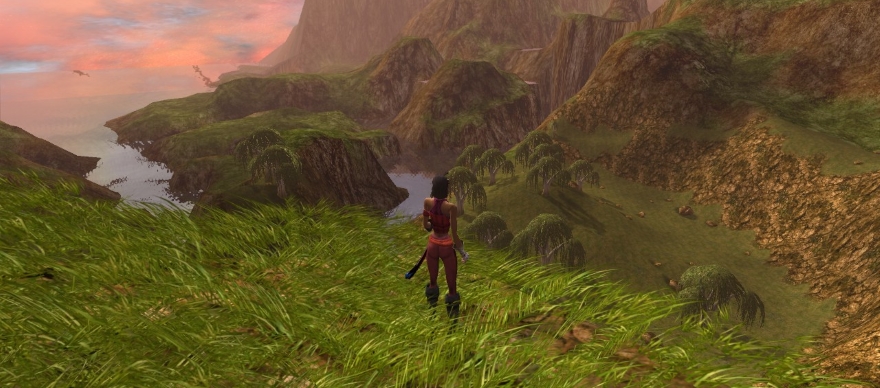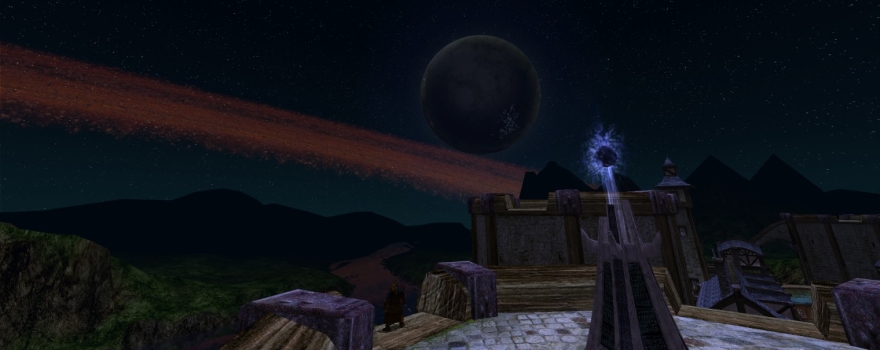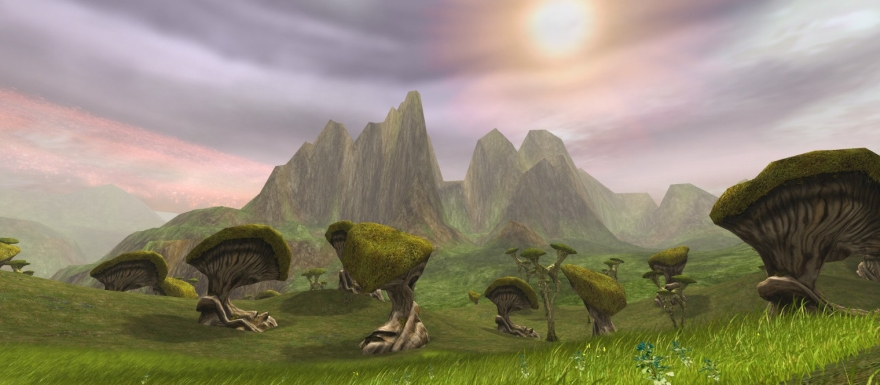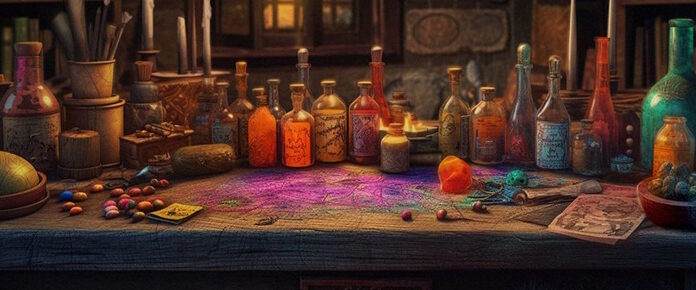
MMO sequels are funny animals. Sequels (along with prequels and “reimaginings”) are ingrained into the entertainment industry so deep that it makes sense that MMO studios would follow suit. And yet these types of games — with their ever-growing nature and heavy involvement with loyal playerbases — are not always conducive to such projects. More often than not, a sequel to an online game becomes its predecessor’s main competition, which is not a desirable outcome for the studio.
Perhaps back in the early 2000s, studios simply didn’t know better. There’s good evidence that the typical “hit video games need a sequel” mindset ran rampant across the industry, from the multiple attempts at Ultima Online 2 to the release of the don’t-call-it-a-sequel sequel of EverQuest II. Perhaps developers didn’t realize that MMO players didn’t necessarily want to be uprooted and moved to a new game every few years.
While sequels, spin-offs and remakes are still present, the genre learned a hard lesson with Asheron’s Call 2: Fallen Kings in the first half of the decade. Asheron’s Call was a minor success for Microsoft and Turbine, and a sequel — with vastly improved graphics and deeper gameplay — seemed like a logical next step. Unfortunately, it was a Greek tragedy in the making, destined for a short but memorable life in our world.
The end of the world was only the beginning…
When contemplating a sequel to Asheron’s Call, Turbine decided that more of the same wouldn’t cut it. The team was going to take Dereth into the future — and destroy the world in the process.
Yes indeed: Asheron’s Call 2’s setting followed an apocalypse of sorts that struck the world. Fortunately, the inhabitants got a heads-up in time and fled to shelters until it was safe to emerge. The world they returned to was vastly different than the one of Asheron’s Call, and it was here that the game began, with nomadic factions picking up the pieces, sussing out the changes, and trying to reshape civilization.
Randy Spong tried to give players a feel for the game’s background: “You have lived your entire life in one of these shelters, knowing nothing about the world outside, watching numberless scouts leave for Dereth, only to never return. But now, scouts have gone and come again! The world is inhabitable! It is time for you to drive off the evils that have forced your people to hide for so many generations, and reclaim Dereth!”
Asheron’s Call 2 released on November 22nd, 2002, to fairly positive reviews and a smaller-than-expected crowd. “Let me remind all AC1 players that we have no intention to shut AC1 down when AC2 ships,” Matthew Ford said prior to launch. “We think a lot of AC1 players will want to jump forward into the future and join us in AC2, but we don’t want to force them to leave the old Dereth.” However, Turbine was about to discover that the fact that a sequel might be superior in features and graphics didn’t mean that the old guard would automatically up and move from their MMO home.
Bigger and better
Wisely, Turbine decide not to start from scratch with AC2 but to build off of the successful elements of the first title while making changes to become more player-friendly. For example, the death penalty was vastly reduced from the typically harsh event it was at the time, crafting was far more involving, and there was considerably more balance between the classes so that one type (i.e., magic) would not overpower the rest.
Players had a choice of three races and 18 classes to begin with, all of which had a hard level cap to give Turbine more control over balance than what it had encountered with the “soft cap” leveling system in AC1. Classes were tied to races, so if you wanted to be a Hive Keeper, for example, you were going to have to roll a Tumerok. Turbine kept to the holy trinity design with its classes, on top of allowing players to choose how they’d deal damage: magic, missile, or melee.
The main selling point of the franchise, regular monthly events that would change the world and give players new things to do and stories to experience, made a return in Asheron’s Call 2. As the monthly events rolled out, they connected together to form memorable story arcs that had beginnings, middles, and ends.
Turbine envisioned a dynamic world where players’ actions would make a noticable difference. During crafting, for instance, if players added fuel to a workshop’s fires, the place would change in appearance to show off its improved state.
Guilds had an interesting, if flawed, allegiance system in which lowbies would fork over XP to those higher up in the chain of command in exchange for items and assistance. Unfortunately, it had the effect of encouraging guilds to open the doors to everyone in the hopes of getting free experience instead of being selective with applications.
KvK and sweet jams
While the game launched with standard PvP areas, players found ways to prey upon those just passing through for PvE activities, and Turbine was forced to rethink its approach. The developers then fashioned a Kingdom vs. Kingdom (KvK) system in which PvPers would ally themselves with one of three kingdoms and fight for that cause. Each kingdom had a fort that could be built up — and attacked — and by participating in KvK, players would gain access to special skills that they couldn’t get otherwise.
Like many virtual worlds of its era, Asheron’s Call 2 placed a high premium on giving players tools with which to roleplay. One of those tools was a unique (for the time) player music system. Unlike Turbine’s later advances with Lord of the Rings Online, in which players could fashion their own tunes on instruments, the music system in AC2 established set tunes that could be played independently or together by in-game musicians.
Sound Producer and Composer Geoff Scott explained the thinking behind it: “After creating these melodies, I would write another instrument against it, making sure each melody worked with its sister melodies and against all of the melodies of another instrument. In listening to the melodies, I would balance the range, rhythm, and counterpoint of a specific instrument to provide the space in each section. Overall, there are 10 to 15 instruments with 10 melodies each. These melodies can be played over a multitude of mood-swapping background scores in any instrumentation and with any number of players.”
The musical experimentation didn’t stop there, either. Asheron’s Call 2 even gave each mob its own small theme that blended in with the background music when players encountered it.
Awards and expansion
While it was not a hit with a huge cross-section of gamers, AC2 was certainly noticed by many critical venues and amassed an impressive amount of awards during its run. By the time the title was just 100 days old, it won “Game of the Year” from several sites, “Best PC Persistent World Game of 2002” from IGN, and many more nominations.
Asheron’s Call 2 received just one expansion in its three-year lifetime, titled Legions. Released on May 4th, 2005, Legions added on to the world significantly. Through it, Turbine added two additional races — the Empyreans and the Drudges — and four more classes as well as provided much-needed content to AC2’s endgame. Adventurers could, for the first time, travel to the mysterious land of Knorr and see who needed killing there.
The expansion’s highlight was undoubtedly the Hero 2.0 system. At level 45, players underwent a Hero Initiation quest to unlock progress beyond level 50, effectively raising the level cap to 150. All players, whether they had purchased the expansion or not, could enjoy the benefits of this system.
Fading away
When asked in 2002 how AC2 would endure compared to Asheron’s Call, Randy Spong gave an optimistic reply: “We have every intention of staying around equally as long with Asheron’s Call 2, and delivering just as many exciting monthly episodes that will enhance both the story and the game itself.”
Alas, this was not to be the case. The game’s population, which was estimated to be around 50,000 at the height of its popularity, had plummeted to around 15,000 by 2005. Even as players were celebrating Legions’ release, Turbine saw the writing on the wall and began plans to close it by the end of the year. Asheron’s Call 2’s small but loyal community was not enough to keep the game’s finances in the black, and the studio had no choice. It announced the impending December 30th, 2005 shutdown in August of that year.
“The biggest factor [contributing to AC2’s cancellation] was the subscriber numbers,” Director of Community Relations Jonathan Hanna said. “One of the key lessons that we learned is the customer perception of sequels in the MMO space. They end up splitting your community more so than growing it. So they are counterproductive, unlike sequels in other game genres where they can be really successful.”
At the time, the closing of Asheron’s Call 2 was the most high-profile shutdown in the MMO indusrty, and gamers watched this online world head toward an expiration date in wonder. A One blogger observed, “The players aren’t dying in real life; they’re just being forced to disband. Their emotional state is thus more like the grief of an indigenous tribe that is being driven off its land by a megacorporation and is losing its way of life.”
Returning for an encore
Seven long years passed, and mention of this title had faded to somewhere below a whisper. Then, completely out of the blue in December 2012, Turbine quietly announced that it was bringing back Asheron’s Call 2 as part and parcel of the Asheron’s Call subscription package.
Just as its shutdown had marked a historical moment, so its return — understated though it was — turned heads due to the fact that very, very few canceled MMOs ever get a second lease on life. In this case, Turbine already owned all of the IP for AC2, so there were no legal barriers keeping the studio from flipping back on the switch.
Of course, it wasn’t like massive droves of players returned. There was an initial flurry of action on the AC2 server as curious gamers checked it out, but for the most part it and its older sibling have faded into obscurity, populated only by the most loyal and dedicated of fans.
As of this writing, Asheron’s Call 2 continues to run, even as Turbine has tumbled from its once-prominent position as a leading indie MMO studio. Perhaps the best that game’s fanbase can hope for is a few more years of continued life, a coda to what began back in 2002.
Screenshots courtesy of AC2isback.tumblr.com.
 Believe it or not, MMOs did exist prior to World of Warcraft! Every two weeks, The Game Archaeologist looks back at classic online games and their history to learn a thing or two about where the industry came from… and where it might be heading.
Believe it or not, MMOs did exist prior to World of Warcraft! Every two weeks, The Game Archaeologist looks back at classic online games and their history to learn a thing or two about where the industry came from… and where it might be heading.

















